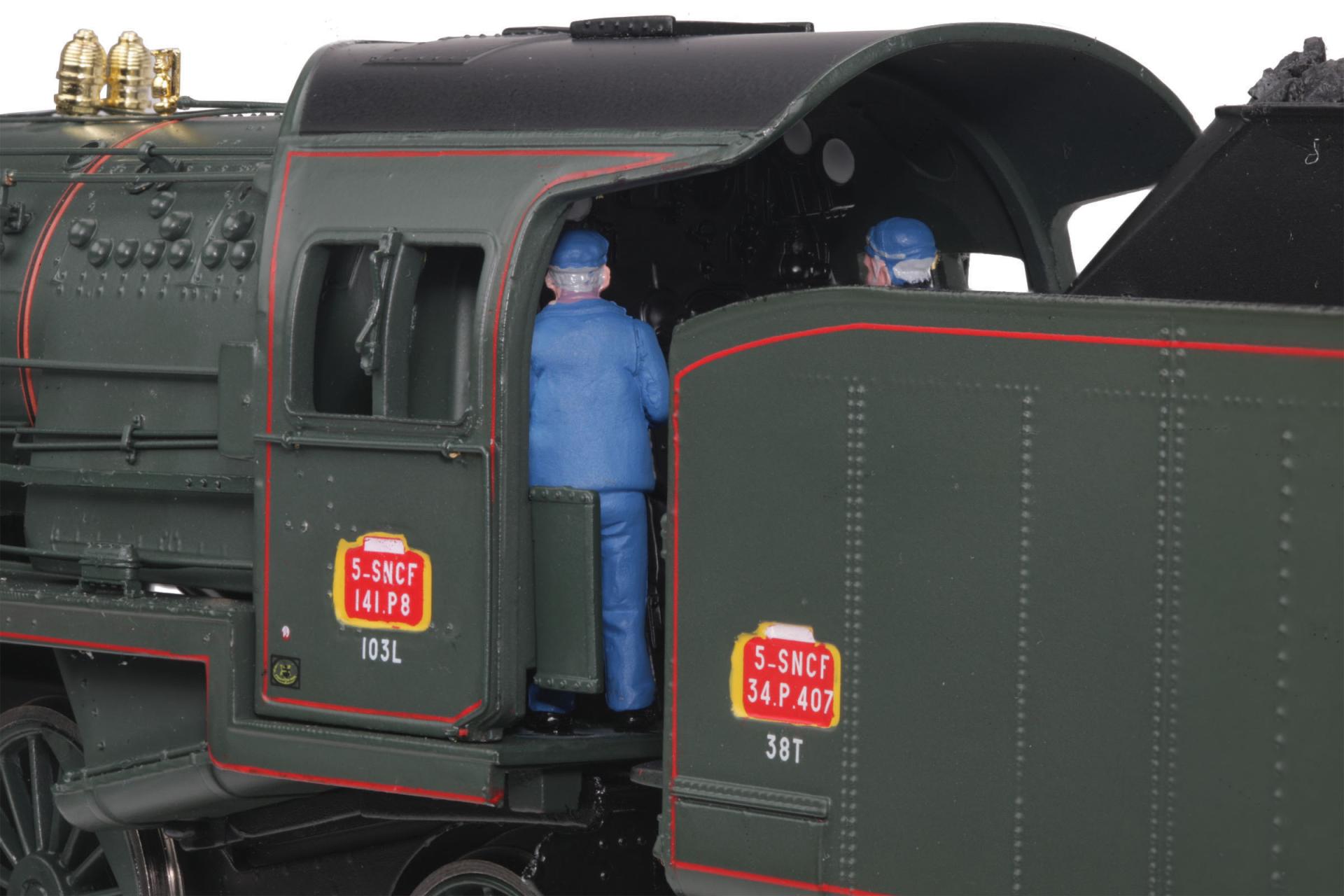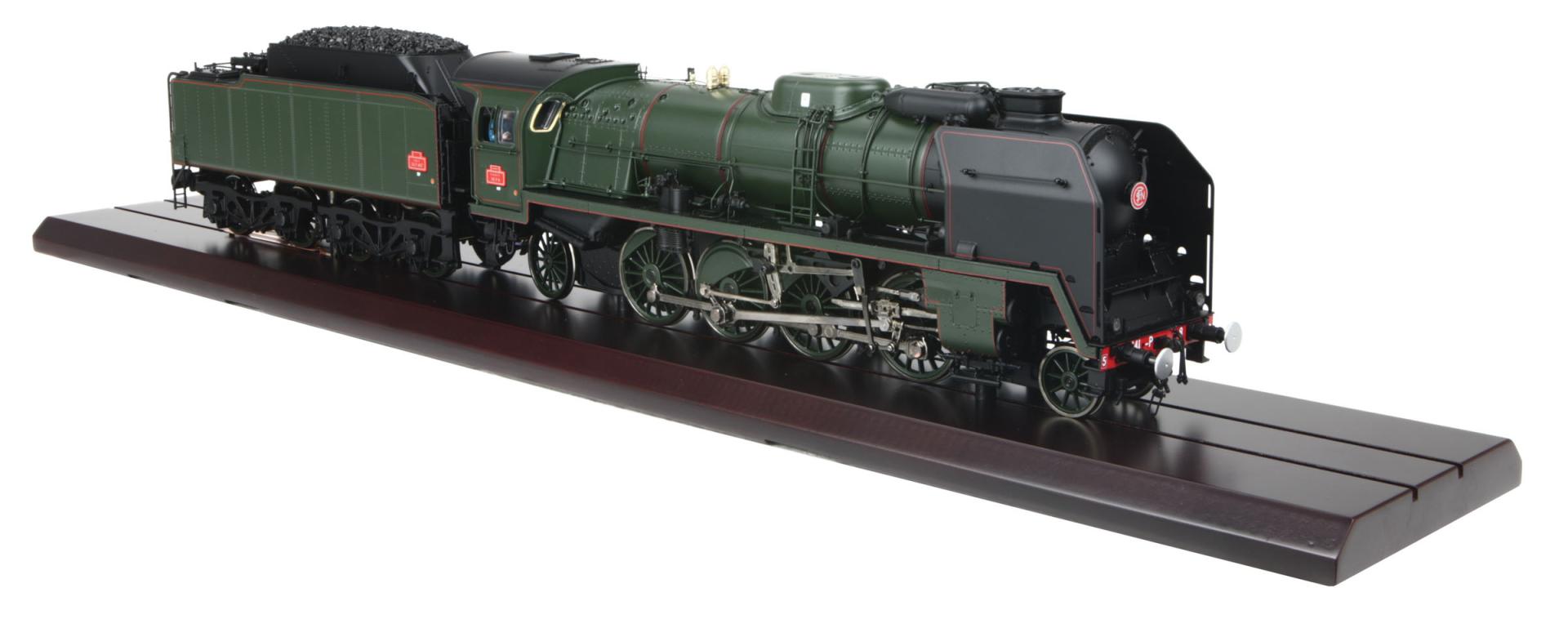









Venissieux O Scale Premier 141P Mikado Steam Engine w/Proto-Sound 3.0 (Hi-Rail Wheels)
Overview
The 2-8-2 wheel arrangement - a 141 configuration according to the French who count axles rather than wheels - was the most common steam locomotive configuration to ride France's rails. The most common was the 141R. But the 141P, the first steam engines designed by the DEL (office for development of steam engines) after that office was created in 1938 as part of the nationalization of the French railroads proved to be the best of the 141 designs. They were intended to address the dual concerns of increasingly faster freight trains and heavier passenger trains.
In an effort to reduce development and testing time, design engineers Chan and Chapelon refined the PLM railroad 141C-D-E's design by utilizing higher boiler pressure, a longer smokebox and a reinforced frame and stoker. The new locomotive resulted in an initial order of 103 units in 1941 by SNCF, the French national railroad. That batch, due to the second World War and the subsequent invasion of France, was not completed until 1947. A second order of 215 engines was subsequently given to various French locomotive works. The last of the 318 141Ps were completed in 1952, the highest quantity of steam engines built according to a DEL design.
Though the 141R was the most populous of the 2-8-2 mikado class found in France, the most powerful was the 318-strong 141P class. Boasting nearly 3,300 horsepower, the 141P was among the most efficient steam locomotives in the world thanks to their compound design. Burning 30% less fuel and using 40% less water than their 141R counterparts should have endeared them to the railroads' accountants, but they were unable to compete with the 141R when it came to reliability attested by the fact that all 318 units were scrapped while the 141R remained in service until the end of the steam era in 1975.
Interestingly, the more common 1,340 141R units were ordered and built from the shops of Lima Locomotive Works, American Locomotive Company, Baldwin Locomotive Works, Montreal Locomotive Works and the Canadian Locomotive company at a rate of nearly three locomotives per day. Sixteen of the 141R's never made it to France, sinking in a violent storm off the coast of Newfoundland in 1947. A seventeenth unit was lost in Marseille Harbor.
The 141P marks the third French locomotive to be released by M.T.H. Electric Trains following on the heels of the 231 Chapelon and Class 241A. Outfitted with Proto-Sound 3.0, the 141P can operate conventionally under AC or DC power or in command mode under DCC or DCS control. Equipped with high-quality digital sound, LED contant voltage lighting, hi-rail or fine scale wheels and synchronized puffing smoke timed to the drive wheels' revolutions ensures that the 141P will be a favorite on any O scale model railroad.
